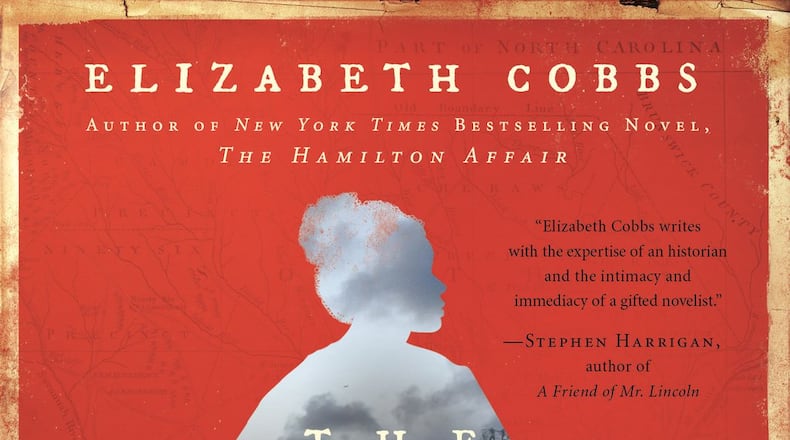In May, U.S. Treasury Secretary Steven Mnuchin announced that the planned redesign of the $20 bill featuring Harriet Tubman would not be unveiled in 2020. With or without having her face on the $20, Tubman is the kind of historical figure who deserves more public attention.
Tubman may be the single person most associated with the Underground Railroad’s success at transporting people of color from Southern slavery to Northern freedom in the 19th century. Tubman was born into slavery in Maryland in the early 1820s, and after she escaped to freedom in 1849, undertook at least 13 missions that freed more than 70 people.
No matter how deserved, putting faces on currency, postage stamps or monuments never captures the complex personalities and lives of even the most beloved national heroes. Elizabeth Cobbs’ novel “The Tubman Command” takes a close-up view of a fascinating yet neglected episode in both Tubman’s career and the Civil War. Cobbs’ lively narrative fleshes out our understanding of Tubman as a woman while offering vivid portrayals of life in bondage, war-time strategies and America’s knotty racial legacy.
A historian and novelist, Cobbs dramatizes events from late May and early June of 1863, when Union forces, not long after some demoralizing failures, made a raid up South Carolina’s Combahee River, attacking plantations and liberating hundreds of slaves. Under her popular nickname “Moses,” Tubman is known to have led scouting missions ahead of the attack, in addition to her ongoing role of recruiting freed Black Americans to the Union cause.
The title “The Tubman Command” and some of the dust-jacket copy might be initially misleading, conjuring images of the diminutive abolitionist leading a charge of armed troops across battlefields. Cobb dramatizes the key role she plays ahead of and during the raid without giving Tubman the kind of heroic moments that would strain credulity. Official records of Tubman’s involvement are spotty, but in the author’s note the novelist persuasively defends how she extrapolated the abolitionist’s involvement.
Cobbs crafts suspenseful sequences that place Tubman at the head of risky scouting missions into enemy territory. She skirts aggressive alligators to map underwater mines on the Combahee and risks capture from sadistic slave-drivers when gathering intelligence about the nearby plantations. In a way, the novel unfolds a little like a heist movie, with Tubman and her Union commanders watching the clock and gaming out the ideal moment to go behind enemy lines to abscond with the prize, which happens to be hundreds of human lives.
It would be a trying situation for anyone, but Tubman must negotiate some particularly fraught dynamics. By 1863 she’s famous in the abolitionist community and a contemporary of John Brown and novelist Louisa May Alcott (both of whom get passing mentions here). At times she learns that she can use her celebrity to her advantage, but she also finds that the Union Army retains plenty of racism against black people and condescension towards women. The way she uses subtle interpersonal diplomacy to avoid conflicts and champion her cause seems not too far removed from tensions in the modern-day workplace.
Cobbs explores some intriguing footnotes from Tubman’s biography, such as her lifelong propensity for seizures when a particularly brutal overseer gave her a childhood head injury. Tubman had a brief marriage while still a slave, and the book advances a theory that she gave her daughter to one of her free in-laws to be raised in the North. In a subplot that pushes the book close to melodrama, she has a romance with Samuel, another former slave turned Union scout. Tubman is distraught when she learns that he has a wife and children on one the plantations they hope to liberate, but Samuel explains that he was forced to marry and bear children by his owners. The characters grapple over how to treat the rules for fidelity if a marriage occurred in bondage and under duress.
At one point, Tubman reflects on consequences if they were to get together: “The outside world … expected and needed Harriet Tubman to be a saint, not someone who abandoned her own child or busted up another family. No matter how much white folk said they understood the ways that slavery twisted people’s lives, they didn’t. They would look at her and her cause differently.” Her private, emotional needs can prove incompatible with her dedication to the anti-slavery cause.
“The Tubman Command” has a sharp eye for period detail, making a compelling location out of Hilton Head Island as a military encampment (a far cry from the popular coastal vacation spot of today). The dialogue incorporates period-appropriate slang that generally rings true: secessionists are called “Secesh,” former slaves can be collectively referred to as “contraband,” and a particular kind of small boat is known by the Gullah term “trus’-me-Gawd.”
Incorporating such real military figures as the raid’s commander, Col. James Montgomery, Cobbs oversees a sprawling, boisterous cast of characters. But for all the excitement of the missions and joy at its successes, a shadow hangs over the action, as Tubman and her allies are well aware that hundreds of thousands remain enslaved. The triumph only adds urgency to their cause.
In addition to being an entertaining work of popular historical fiction, “The Tubman Command” excels at capturing the person behind the iconography, whether or not she ends up on the $20 bill.
FICTION
‘The Tubman Command’
by Elizabeth Cobbs
Arcade Publishing
326 pages, $25.99
About the Author
The Latest
Featured


